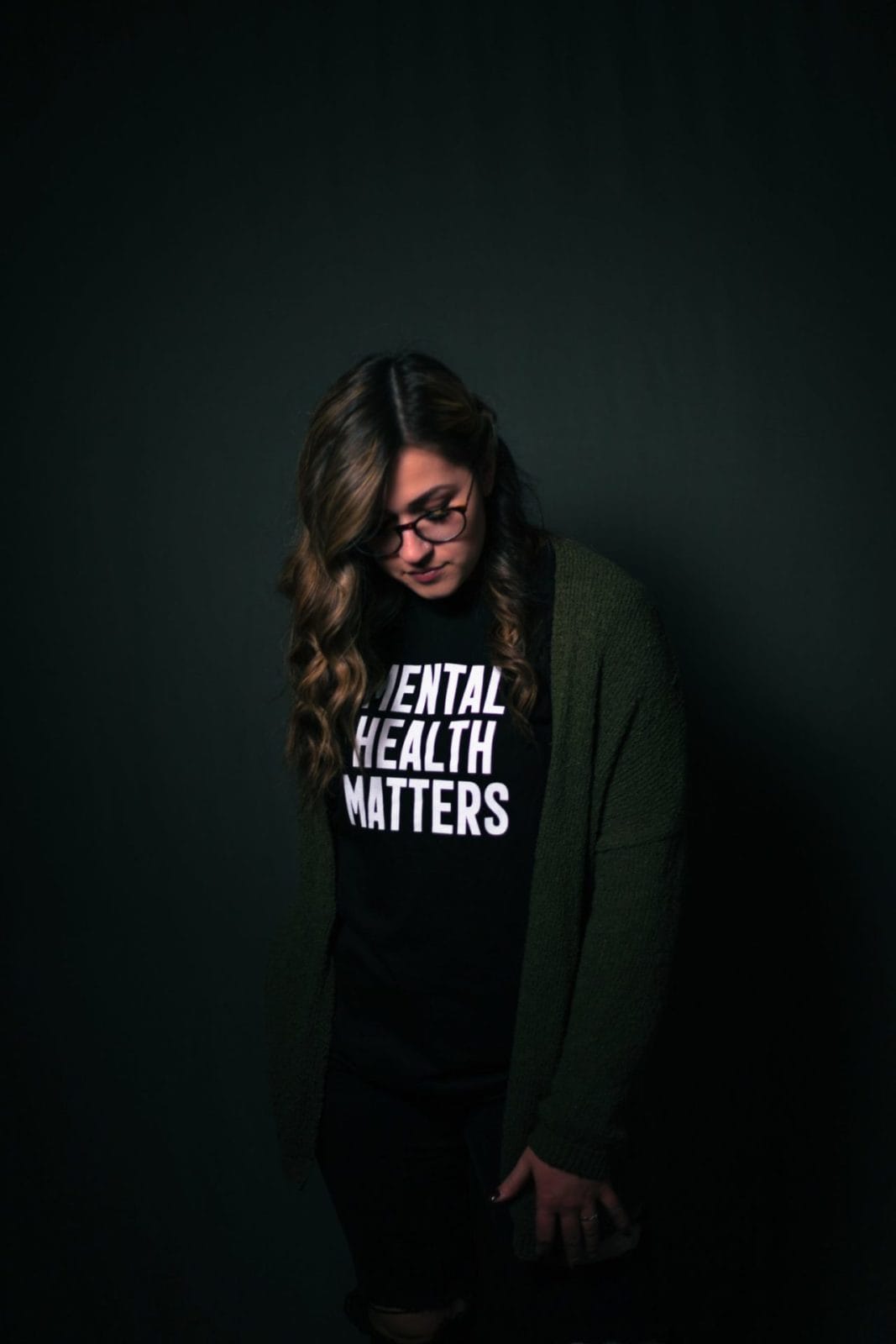The Better You Institute, LLC
In-Home Therapy Philadelphia, PA
Are you a parent of a child or teen and it seems like all you do is argue? After all of the sacrifices and ways that you provide for your child, feelings of hopelessness and helplessness in your unsuccessful relationship with your children can feel really defeating! Thinking that “nothing will change” or “I cannot handle this problem” are common thoughts that parents can have when feeling stuck. You want nothing more than to help your child, but they won’t let you in.
Contact Us Today for In-Home Therapy or Counseling in Philadelphia, PA!

Call us today to set up your appointment!
In-Home Family & Child Therapy & Counseling in Philadelphia, PA
These types of thoughts and feelings make sense. The good news is that it can be fixed! Working through problems in the family can be done. First, everyone involved has to understand what the problem is and how it started. Next, it will be important to understand the reasons that the problem continues.
Collaborative work between family members is vital to finding answers and moving away from the problem to a solution. Lastly, focusing on the strengths of the family will create sustainable change because you will be relying on skills that you already have as a family.
There is a process to understanding how to make these changes. The keys to the process can be found in your family. Through building a trusting therapeutic relationship, your therapist will help everyone in the family understand the part that they will play in improving the relationships in the home.
One way of building the therapeutic relationship is for the therapist to come to you. Yes, the therapist will come to your home and explore family dynamics and relationships within the very home that they occur. In-home therapy is a powerful tool that therapists can use to help you and your family get unstuck and more connected.
Our Specialists & In-Home Therapists in Philadelphia
You may be wondering,
“What is In-Home Therapy?”
In traditional therapy, an individual, couple, or family comes to the therapist’s office or logs into a platform for a virtual therapy session; In in-home therapy, the therapist comes to you. There are specific therapeutic models that are designed to be done within the clients’ home. Ecosystemic Structural Family Therapy (ESFT), for example, is one of the leading therapy models used to do in-home therapy. Other models specific to substance abuse can be very helpful when done in the home.
In-home therapy was developed to help clients and their support systems work through intense problems that feel more manageable with the clinician coming to them. In-home therapy’s intention is to engage all members of the family to help restructure and re-engage in a way that feels more positive for each family member. In-home therapy is something that is possible in the office or virtually but can be more streamlined within the home.


What to expect from In-Home Therapy
A therapist will enter your home after speaking to family members and hearing about the “rules” of your home. You may have specific rules and expectations in your home that you would like the therapist to adhere to. An example of this could include expectations about whether or not shoes are worn in the home or what location in the home sessions will take place.
There are a few stipulations that are important to consider.
It will be important to figure out a place that can guarantee privacy/confidentiality while also creating feelings of warmth and safety for in-home sessions that are not for the entire family. The therapy session will last the same length of time as a session in the office would. The only difference is that instead of the family leaving the office, the therapist will leave the home at the end of the session.
Can In-Home therapy still happen during the COVID-19 pandemic?
In short, yes! We want to make sure people are still getting the services that they deserve. With that being said, precautions will need to take place in order to ensure that the spread of COVID-19 is minimal. For this reason, COVID-19 screenings will be completed each time before the therapist comes to the home to make sure no one is experiencing symptoms. Additionally, the therapist will be wearing a mask to protect you since the therapist may have been in another home recently. It is asked that the family engages in the same safeguards by wearing masks while the therapist is there. This includes children as young as 4.


What happens during a first in-home therapy session?
During the first in-home therapy session, your therapist will arrive at the home and introduce themself to the family. After introductions are complete, the therapist will move with the family to the designated place for therapy. From there, consent paperwork and issues around confidentiality will be discussed with the family. The session will transition into understanding the family’s experiences and expectations of therapy before the therapist shares some ideas about expectations.
After discussing and agreeing on session rules and expectations, the last part of the session will be for the family to agree on a goal for treatment. This is an important step in the therapy process because it will create intentionality for each session. Talking about treatment goals and progress towards treatment goals is something that will be reviewed with the family every 4 months to understand if changes need to be made. Oftentimes they will need to make some changes to the goals or they will need to assess if the therapy has been working with the family. This allows input from the family to talk about their perceptions of how treatment is going with the therapist. The most important part of creating a treatment goal for the family will be having one that the whole family can agree on.
How do I know in-home therapy is right for me/us?
Ultimately, you are the one who can decide if in-home therapy is right for you, the relationship, or the family. We welcome you to call and talk to Callie, our intake specialist, to get a sense for the right fit of therapy for you. If you decide that you’d like to try in-home therapy, Caleb, our in-home therapy specialist will reach out and walk you through each step needed to get started. Changes can be made if you decide that In-Home therapy isn’t working and would feel more comfortable coming into the office or having telehealth (i.e., virtual) therapy sessions. We want to make sure that you are able to make the best decisions for your therapeutic needs. Specifically if you are located in Center City, in home therapy will be available to you. Otherwise, the therapy may have to be conducted through telehealth sessions.

HIDDEN
Pros of In-Home Therapy
- In-home therapy can be used as a way for an individual client, couple, or family to receive the benefits of person-to-person therapy without having to travel outside of the home.
-
-
You don’t have to worry about transportation, traffic, parking, all the things that come with traveling to someone else.
-
You don’t have to worry about motivating your children to get in the car to make it to your appointment on time.
-
You can have dinner cooking in the oven while you work with a therapist to better your family.
-
-
It can be used for people who may experience mobility concerns getting to an office.
-
Families with small children don’t have to worry about packing the stroller, the diaper bag, snacks, etc.
-
Larger families, who may worry about enough seating or space in the office, know what accommodations there are because therapy sessions will take place in their home. It can give a better sense of familiarity and control.
-
People with busy schedules who still want in-person therapy have less to juggle if the therapist comes to them.
-
People who are unable to leave their homes, or who are immunocompromised, and don’t want to sit in a waiting room or take an elevator don’t have to.
-
The potential treatment effectiveness can increase because of greater feelings of connection to the problems when a therapist can see and experience what is happening in the home.
-
Feelings of safety while working through therapy topics can increase due to being in a familiar place through in-home therapy.
-
Treatment can be done faster as it can take less time to build a strong therapeutic relationship with an in-home therapist.
-
Treatment can be done faster as the client/family doesn’t have to adjust to a new space that is unfamiliar and may not be as comfortable.
-
Being in the location where a lot of the events and history occurred may “jog” your memory and emotions in a way that can be different than if you are in an office setting.
-
The therapist can use places in your home, furniture, or familiar props during the therapy sessions that may increase the impact of what they are saying or the process they are working to change that they don’t have access to in the office.
-
The therapist has access to seeing normal, every day nuances that occur in the home (e.g., The dog barking and disrupting connection between family members, family or friends stopping by the home, or how the family is organized within their home) that the therapist doesn’t have access to in the office setting, but that can be useful in helping the family understand their problems and how to overcome them.
-
You may be able to share with your therapist family traditions or school projects that would be difficult to share in an office setting.
HIDDEN
Cons of In-Home Therapy
-
In-Home therapy can take time getting used to a new person coming into the home. It may feel invasive to your privacy at first.
-
Some may not feel comfortable processing traumas or difficult conversations in a place where they had experienced those events before.
-
An office setting may offer a more neutral space to allow your thoughts and feelings to be more vulnerable rather than feeling like you need to “protect” yourself more in your home.
-
In-home therapy may be experienced as more vulnerable to some people. It can feel more intense which can leave people feeling emotionally raw and vulnerable in their homes afterward.
-
You may feel pressure to “impress” the therapist*. For example, you rush to clean the home before the therapist gets there, you may feel obligated to offer the therapist food or drink, you may let the therapist do something in your home that you don’t allow your family to do (e.g., leave their shoes on). This can create an unhelpful dynamic between you and your therapist as it will give you more of a burden to think about, which can impede the work that you all are doing together.
-
*Your therapist does not need a clean home to do their job.
-
*Your therapist does not need you to provide food or drink to do their job.
-
*Your therapist is happy to follow all house rules.
-
*Your therapist does not need you to impress them!
-
-
You may experience more distractions in your home during therapy sessions that you wouldn’t have in an office setting (e.g., the cat jumping onto your lap, a neighbor stopping by, a mail person delivering mail, etc.)
-
The office may offer more space/furniture that is set up for therapeutic use that you may not have in your home.
-
The office is a neutral meeting place for split/co-parenting/blended families to meet in instead of having to choose one home over the other.
Therapeutic Approaches to In-Home Individual Therapy


Common In-Home Therapy Topics
-
Behavioral problems at school
-
Family divorce
-
Blended families
-
Parenting help
-
Talking back/defiance
-
Family disconnect
-
Oppositional Defiant Disorder
-
ADHD
-
Anxiety
-
Depression
-
Trauma
-
PTSD
-
Abandonment
-
Trust issues
-
Isolation/loneliness
-
Schedules
-
Organization
-
Rules and expectations
-
Communication patterns
-
De-escalation techniques
-
Increasing understanding/empathy/compassion
Therapeutic Approaches to In-Home Family Therapy
After reading this far, you may still be wondering if in-home therapy could work for you and your family. This section will give some clarity about how your family will be seen and viewed during the therapy process. One viewpoint to remember is that families are resilient and strong! There is a reason that your family has been able to survive for so long. I know that it may not feel that way at times, but there are usually multiple skills, positive family patterns, and strengths that can be highlighted about any family, including your own.
With the natural strengths of families in mind, an additional understanding of how families are experienced can make it easier to see the family in a different light. Sometimes, it is not a traumatic event that impacts a family the most. Rather, the relationships and responsibilities within the family that have changed since a trauma are the cause of family problems. Changing family dynamics within the home can cause conflicts and difficulties as much as outside influences can. All families have rules and expectations. Some of these rules and expectations are spoken and known (i.e., explicit). Other rules and expectations are not spoken but actually implied (i.e., implicit). It will be the process of figuring out whether it is a traumatic event(s) and/or the impact of a traumatic event(s) that are causing issues within the family. To do this, understanding different aspects of the family, through the use of assessment tools, will be done to understand the underlying reasons behind positive and negative interaction patterns among family members.
What is the process of this approach?
The in-home therapist will work first by observing interactions between family members, and then working toward understanding the meaning and purposes for why these interactions are able to continue (i.e., in what way these interactions are helping the family). Once each family member’s actions and intentions are understood, the in-home therapist will work towards changing the family interactions to align with the understood intentions. Understanding what small changes need to be made within the home will be a large part of the therapy process. The result of making these small changes will result in your family’s interactions being more consistently positive.
What will we get out of in-home therapy?
There are multiple treatment objectives to in-home therapy. One is for your family to understand why the problems happened in the first place. Another objective is to understand how the problems impacted the members of your family. Through awareness of the impact of problems on the family members, your family will work with the therapist to identify strengths and skills you already have to highlight and strengthen and skills that need to be modified to meet your family’s goals. Lastly, the goal is for you and your family to be able to recognize, at the moment, the skills to use to create positive interactions. These skills are learned during therapy and will eventually be used without your therapist’s guidance by the end of treatment.
With the knowledge of how you and your family’s problem will be seen by the therapist and how it will relate to reaching your family’s treatment objectives, Next, authenticity in the therapeutic process will be discussed. Through you and your family being able to be the most authentic version of yourselves, you all will allow your intentions and behaviors to be understood by the therapist, and, later, your family to build trust and attachment within the home. Then, the therapist will work with each family member on how to build communication skills that can help your family clearly understand each other’s intentions and motivations.
Overall, whether you decide that you want in-home therapy for you and/or your family is entirely your choice. If in-home therapy does not seem like a good option for you, then having therapy sessions in person (i.e., at an office) or through teletherapy can easily be accommodated for your needs as well! We want you to be as comfortable and safe as you can be, as this will help you reach your therapeutic goals more easily. There may be other questions or concerns about in-home therapy that you have which have not been discussed in this article. Please feel free to reach out to our intake specialist, Callie, at 267-495-4951.
Therapy and counseling sessions at Altoona, PA, are available mornings, afternoons, evenings, and weekends – we have openings for therapy or counseling RIGHT NOW.
Yes, we are still seeing clients!! Telehealth (Video) Therapy Available.
The Better You Blog
Distress, Distance and Disconnection: The Intersection of Trauma and Attachment
Understanding the Link Between Trauma and Attachment Trauma and attachment are deeply intertwined aspects of our mental and relational make-up. The interaction between trauma and attachments informs...
Understand Attachment Theory: Free Yourself From Attachment Breaks and Their Influence on Adult Relationships
Introduction to Attachment Theory Attachment theory serves as a foundational framework for understanding the dynamics of relationships, particularly how individuals form emotional bonds and respond...









